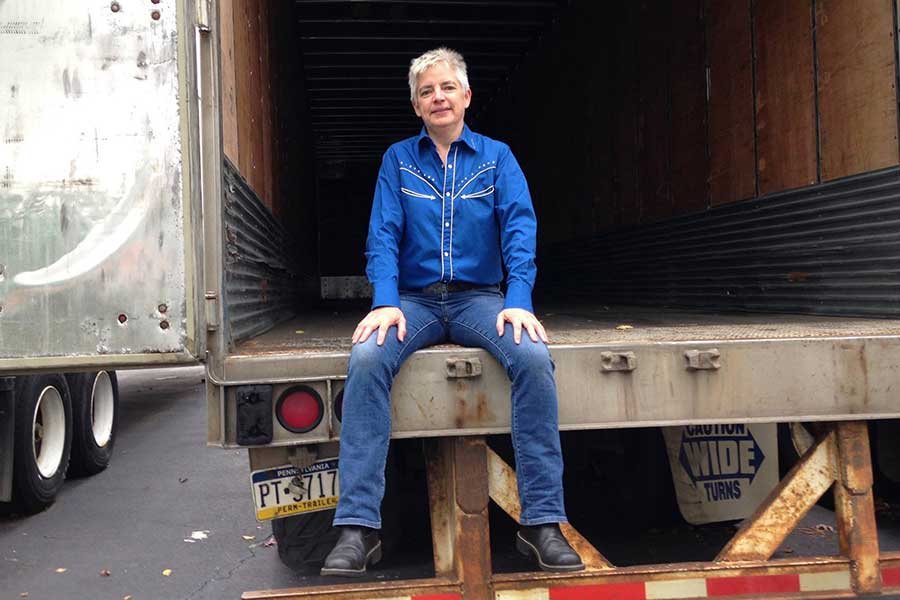The career trajectory of out author Anne Balay is flush with detours. It starts with an English Ph.D., shifts to car mechanic and transitions back to teaching. Then, there’s a book written, tenure denied — and a sharp turn to professional truck driver.
As of 2018, Balay is back to academia. She teaches gender and sexuality studies at both Haverford College and Temple University and has written a new book.
“Semi-Queer: Inside the World of Gay, Trans, and Black Truck Drivers,” published in August, merges academic scholarship with Balay’s lived and learned experiences on the road.
Balay began interviews, informally, while she was still trucking. But after a family medical emergency arose and she informed her company she would be unable to deliver her load, she was abruptly fired. To finish her interviews, Balay frequented trucker hangouts: bars, truck stops and line-dancing at Woody’s. The process took her four years from start to publication.
The book synthesizes the oral histories of 66 non-straight, non-white, non-male truck drivers.
“Burt Reynolds just died and everybody was talking about ‘Smokey and the Bandit.’ That’s what people still think truckers look like, and it’s not true at all,” said Balay. “Look at truckers in California: You hardly see a white person. Women and queers and trans people are becoming incredibly widespread throughout the industry.”
The author said the job is especially attractive to queer and trans people because it offers an autonomy of appearance, identity, schedule and workspace that mainstream society doesn’t afford.
The trucking profession also “takes some desperation, right? Like, you wind up in trucking because your first plan didn’t work out. And it’s some way to then have freedom and independence and control out there. It’s hard to describe how good it feels.”
As freeing as the advantages can be, the regulations are substantial. Truckers operate under the Department of Transportation’s regulations, in addition to the rules of their trucking company and of the multiple states they’ll pass through on a route.
Truckers can work a total of 14 hours in a day, 11 of them driving, but they must take a 30-minute break within their first eight hours. If they exceed driving limits, they’ll face fines, but if they fail to deliver a load on time, they could lose their licenses. There’s the truck’s computer to learn and navigate, while cameras are watching their route — and them. Plus, parking is tight.
“So, if you still have eight hours on your time clock, you could drive that far, but that’s going to leave you having to stop anywhere in southern California, for example, between 3-8 p.m. You’re not going to be able to get a spot,” Balay recounted. “So, then you have to think to yourself, Well, should I stop now, even though that’s depriving me of income, so that I can get a spot? Because if you are in violation of your hours, then you’ll get a ticket and you have to pay that personally and you could lose your license.”
And there’s the lack of safety.
“I met so many trans women who are subject to huge amounts violence out there and are so vulnerable in public space,” said Balay.
Rape or the threat of rape is very common, the author added.
“Reporting violations is just not possible. I mean, truckers know that if they report rape or attempted rape, they’re not going to work again.”
Regardless, the truckers Balay interviewed routinely accepted the threat or actuality of violence as part of the job — a trade-off for the inflated salaries of a male-oriented workplace.
“Semi-Queer” covers the thematic violence on the road, but Balay doesn’t think putting it in writing will increase truckers’ safety.
“What I think it will do is make people see them.”
Balay will hold a reading and discussion of “Semi Queer: Inside the Worlds of Gay, Trans, and Black Truck Drivers” 6 p.m. Oct. 18 at Penn Book Center, 130 S. 34th St.

